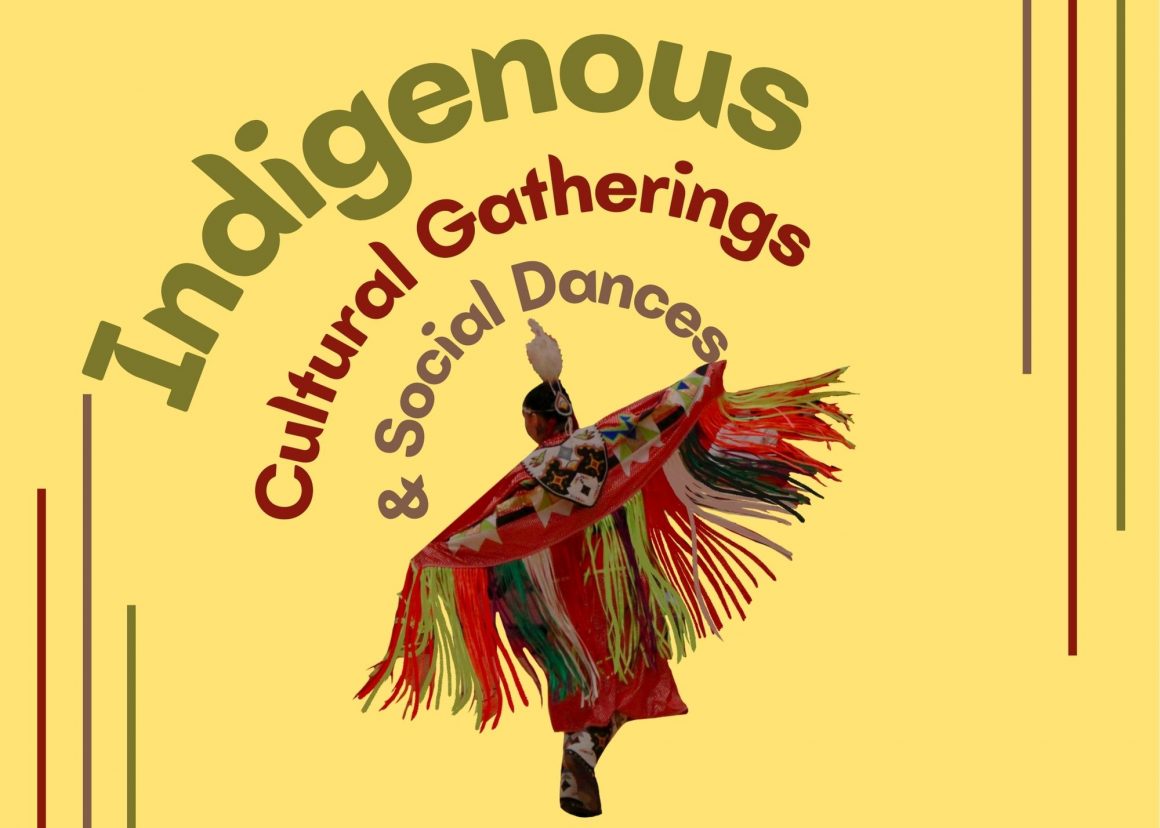
Dancing to heal: Understanding Indigenous cultural gatherings and social dances
By Aymen Sherwani, June 28 2022—
When I think of dance, the first image that comes to mind is a mass of bodies jumping together in a dimly-lit nightclub but, historically, dance has held so much more purpose than a start to a three-day bender. Yes, mainstream performative dance forms like ballet and the waltz hold a lot more artistic significance as they are often meant to tell stories to the viewer, but what if I told you that dance could be — and has been — for so much more? In an event hosted by the University of Calgary titled “Understanding Indigenous Cultural Gathering and Social Dances,” the Faculty of Social Work brought on Traditional Knowledge Keeper, Hal Eagletail, of the Northern Dene TsuuT’ina Nation. During his talk, Eagletail — who is a residential school survivor and Master of Ceremonies for First Nation Pow Wow and Round Dance celebrations — shed some light on how dance is a means for not only healing one’s individual spirit but also healing the spirit of a community — of a people.
“The word powwow is Algonquian and means the gathering of our spiritual people — where spiritual leaders would congregate and decide a harvest, migration, or anything pertaining to the territory and the great injustices across history,” said Eagletail.
When directly translated to English, the word powwow means “he or she dreams” and is a reference to healers within the community — of which Eagletail is also an active participant, having spent a lot of time helping hospital patients heal with the aid of traditional Indigenous medicinal knowledge. Although it is difficult to conceptualize the connection between healing and dance through a colonized lens, dance is an integral part of healing for First Nations all across North America.
“In the United States, [the government] had a policy to put all the Native people together in one area — today it’s called Oklahoma, but historically we call it the Trail of Tears,” he continued. “It’s also known as the long walk where they put all of the First Nations people into one territory, hoping to keep everyone under one land base — within which many great nations gathered and all had their unique dances. A lot of our dances were for ceremonial healing.”
This includes issues of reconciliation — dance, here, serves as a means to reconnect to one’s roots and to heal the trauma incurred by systemic oppression. Prophesied as an end to colonial expansion, Eagletail explained that “the Ghost Dance was banished by the governments. It was meant to reverse the coming of the Europeans and all of the hardships that they gave us through the evolution of our continent.”
This was alongside other dances like the Sun Dance that were banned across history as a result of assimilatory legislative measures like the Indian Act of 1895, taken to further the broader genocide of Indigenous heritage, language and culture. Residential schools were used as a mechanism to ensure that Indigenous children did not continue their ancestral ways of living.
“[The Ghost Dance] represented a feeling of ‘I want to get rid of European people’ but when our people had first contact 500 years ago, we didn’t annihilate or try to kill off the Europeans, we actually helped them survive with our means of knowledge of the plants and medicines,” he added. “Now, we’ve turned that Ghost Dance around and made it the friendship dance — and this dance is where we hold well the original friendship, dancing shoulder to shoulder.”
Reconciliation is a hard word. Since the Truth and Reconciliation Commission was published in 2015, it has been evident that practicing reconciliatory efforts is even more complicated when white supremacy is so embedded within normalcy. Within every institution of our societies. Defining what is civil and what is not. Defining what is classy and what is not. Even dance. Even what it means to heal. What non-Indigenous people must do, here, is listen. Indigenous people have spent centuries being patronized by an oppressive colonial regime that sought to extinguish their ways of knowing — reconciliation, now, is allowing for their voices to be heard first.
As a non-Indigenous Canadian who happens to be an immigrant, what I took away from this event is that I need to personally acknowledge that my presence itself is contributing to Canada’s colonial legacy. Understanding that, what reconciliation looks like is dismantling the conceptual and normative barriers within my own head that determine what is considered healing. As June is Indigenous History Month, it is important to acknowledge that every Canadian has a duty to listen to the Indigenous community. We are obligated to acknowledge the role we have played in deepening the wounds incurred in this country — regardless of the subtlety.
This article is a part of our Voices section.
